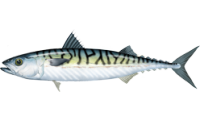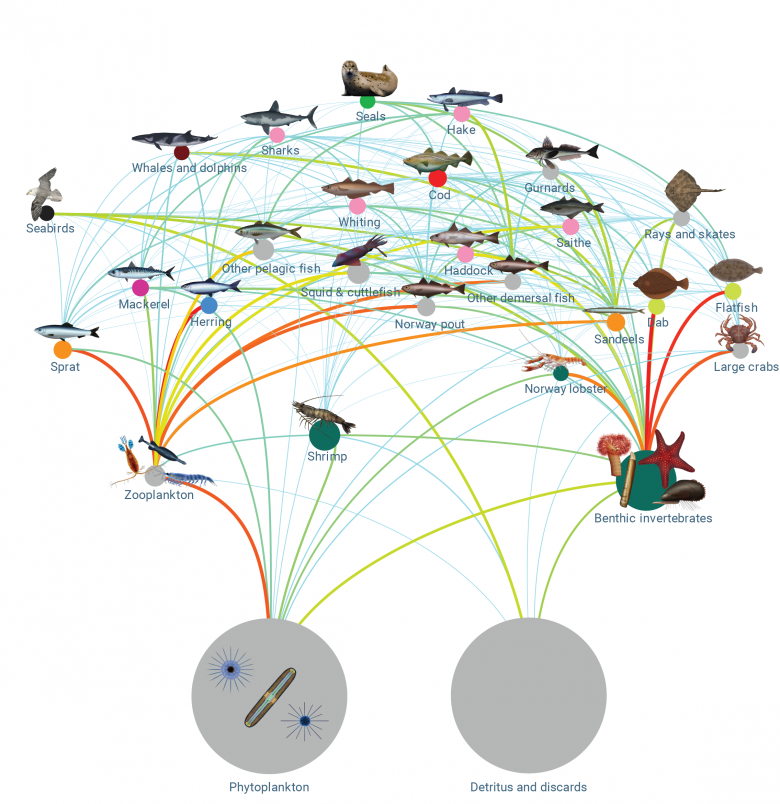 | |
| Data Layer Info | |
|---|---|
| Category | Fish |
| Editable | No |
| Data source | Ecosystem simulation |
| Values | |
| Extremely Low | |
| Low | |
| Medium | |
| High | |
| Extra High | |
| Extreme | |
Description:
Habitat: Pelagic
Main role: Predator
Trophic level: 3,9
Diet: Mackerel feeds on both pelagic and benthic organisms such as fish (sprats, sandeel), worms and other invertebrates.
Threats: Of commercial interest. Mackerel are caught by a directed fishery for human consumption, which tends to target bigger fish, potentially causing smaller, less marketable fish to be discarded.
MSP Challenge 2050:
Mackerel is a month-by-month, computer generated data layer following calculations made by the ecosystem simulation (EwE).
Different pressures generate by human activities (noise, bottom disturbance, surface disturbance, artificial substrate) have different, complex effects on marine species in terms of movement, survival and procreation.
Mackerel is caught by all three fishing fleets, but mostly by industrial and pelagic trawl.
In different languages
- SN: scomber scombrus
- EN: Atlantic mackerel
- NL: makreel
- GE: Makrele
- DK: makrel
- FR: maquereau commun
- NO: makrell
- SE: makrill
The Atlantic mackerel is abundant in cold and temperate shelf areas, and it forms large schools near the surface. Mackerel have no swimming bladder, which allows them to dive quickly in deep water or to rise rapidly to the surface. They are exceptionally fast swimmers and need lots of oxygen.
ON THIS TAB VISUAL CONTENT IS PLACED

 Co-funded by the European Union.
Co-funded by the European Union.